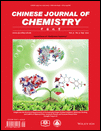Insight into the Structural Requirements of Protoporphyrinogen Oxidase Inhibitors: Molecular Docking and CoMFA of Diphenyl Ether, Isoxazole Phenyl, and Pyrazole Phenyl Ether
Abstract
Protoporphyrinogen oxidase (PPO, EC 1.3.3.4) is one of the most significant targets for a large family of inhibitors that may be used as herbicide, bactericide, fungicide, or photosensitizing activator to treat cancer through photodynamic therapy (PDT). Molecular docking and CoMFA were combined in a multistep framework with the ultimate goal of identifying important factor contributing to the activity of PPO inhibitors. As a continuation of the previous research work on the development of new PPO inhibitors, the bioassay results indicated that good PPO inhibitors were discovered in all of the three chemical series with IC50 values ranging from 0.010 to 0.061 µmol·L−1. Using the crystal structure of tobacco mitochondrial PPO (mtPPO) as template, all the compounds were docked into the enzyme active site. The docking pose of each compound was subsequently used in a receptor-based alignment, leading to the development of a significant CoMFA model with r2 value of 0.98 and q2 (cross validation r2) value of 0.63. This novel multistep framework gives insight into the structural characteristics for the binding of inhibitors, and it can be extended to other classes of PPO inhibitors. In addition, the simplicity of the proposed approach may be particularly applicable in virtual screening procedures.




